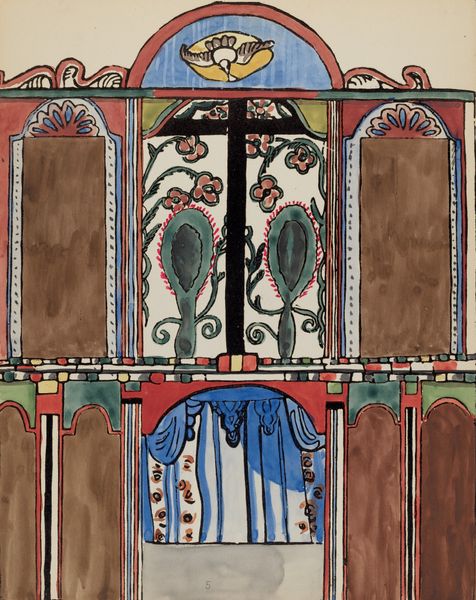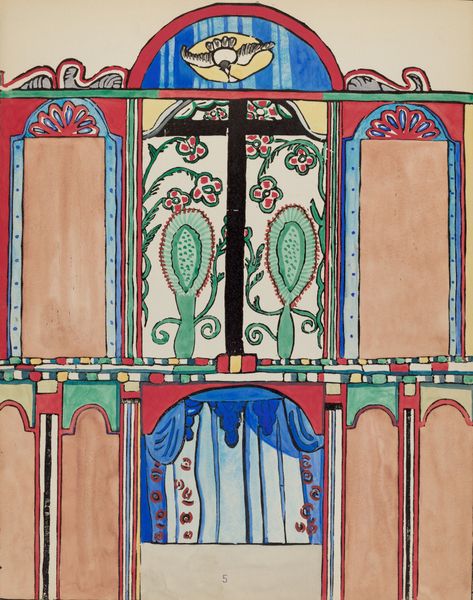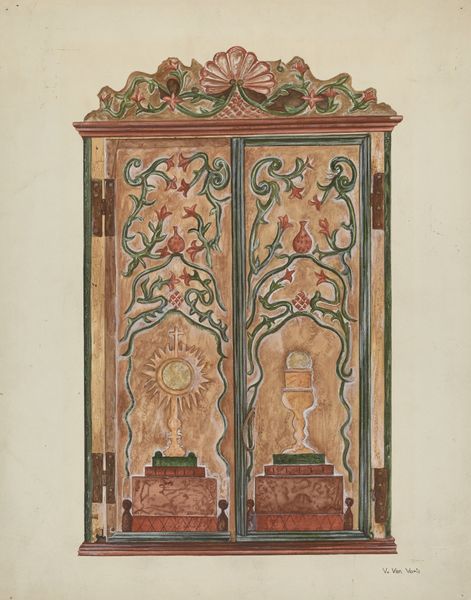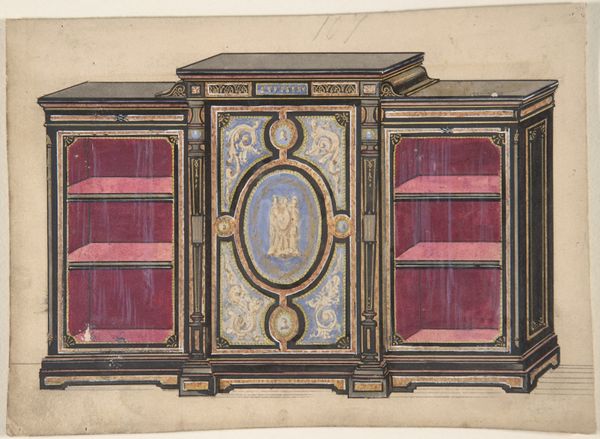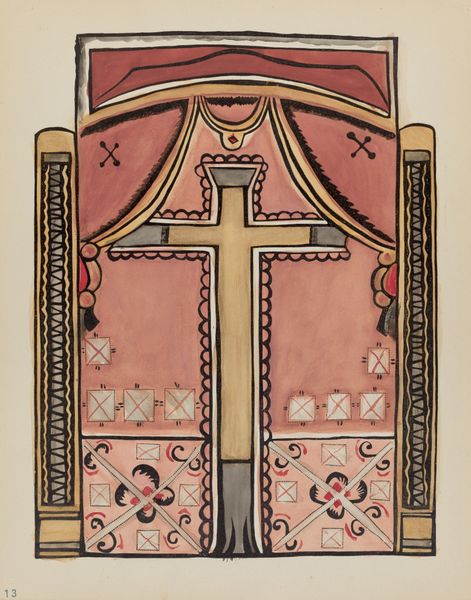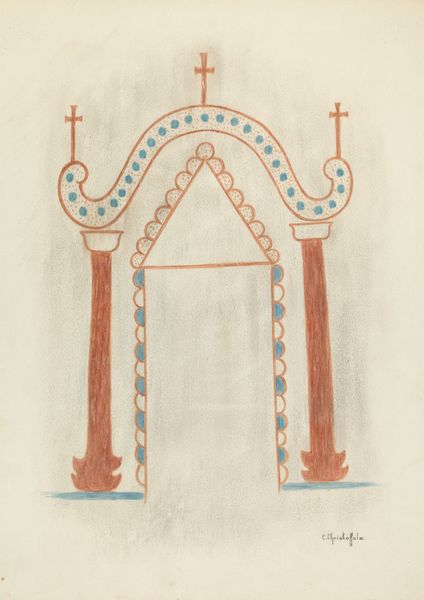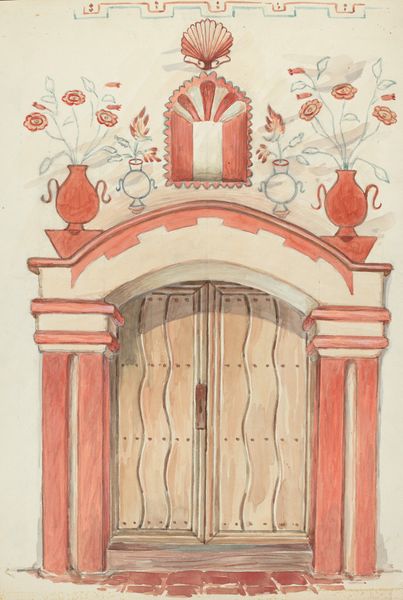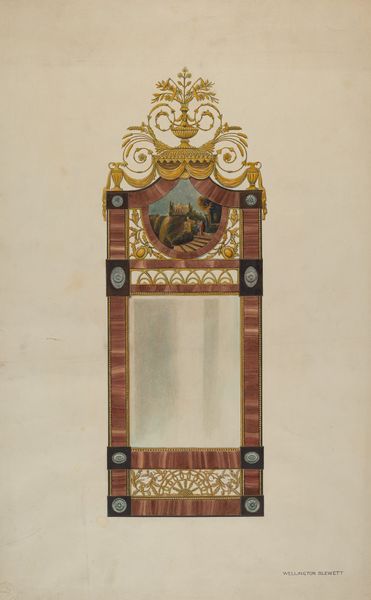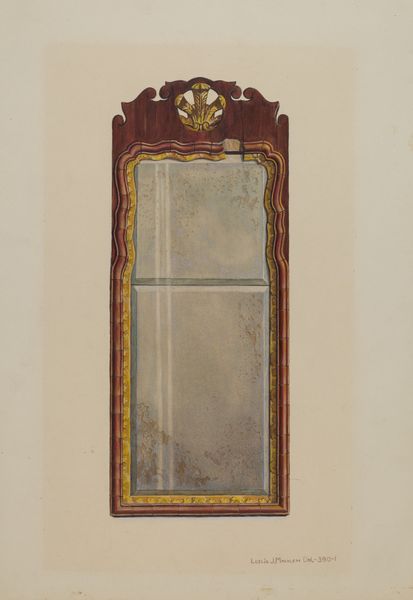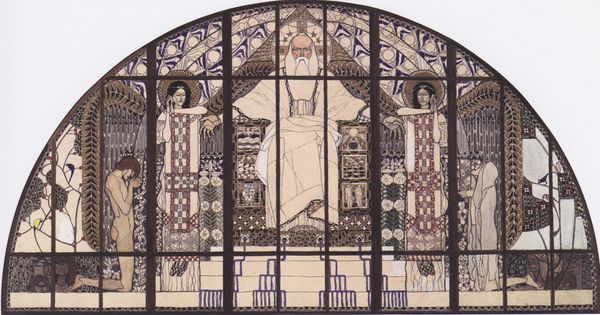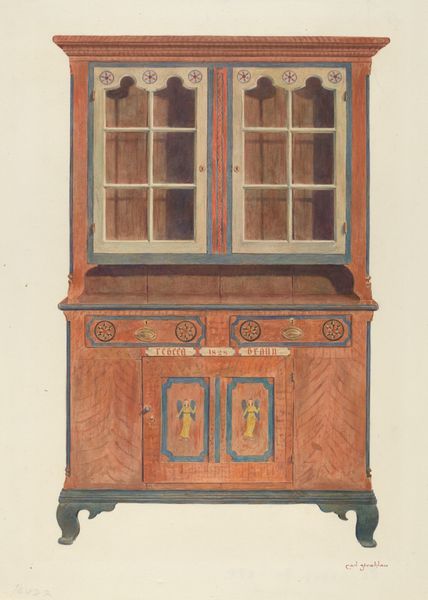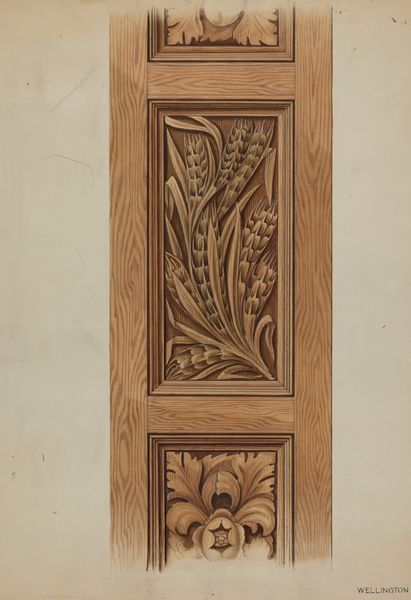
drawing, painting, watercolor, mural, architecture
#
drawing
#
water colours
#
painting
#
mural art
#
watercolor
#
folk-art
#
mural
#
architecture
Dimensions: overall: 38.2 x 35 cm (15 1/16 x 13 3/4 in.) Original IAD Object: 20'high
Copyright: National Gallery of Art: CC0 1.0
Editor: This is a watercolor and pencil drawing of the Main Reredos in Santa Cruz Church, Santa Fe County, created by E. Boyd between 1935 and 1942. It's a whimsical take on a church altar, but with some darker, almost unsettling undertones. How do you interpret this work? Curator: This work speaks to the complex intersection of faith, cultural identity, and artistic expression within the context of New Mexico’s colonial history. E. Boyd documented and preserved the traditions of Spanish Colonial art during a period of cultural shift, highlighting the struggles between preserving traditions and adapting to modernity. What do you make of the folk-art elements combined with the traditional religious subject matter? Editor: It feels almost subversive, like the artist is reclaiming a religious space and infusing it with the spirit of the people, deviating from the traditional formality. The dove at the top seems like a hopeful, gentle presence. Curator: Exactly. Considering the historical marginalization of many communities in the region, particularly indigenous and Hispanic populations, Boyd’s work operates as an act of cultural preservation. It challenges the dominance of Eurocentric artistic canons and gives a voice to previously silenced artistic traditions. The vibrant colors and unique iconography become a powerful statement of identity. Do you think it prompts us to question who gets to define what is considered 'high art' versus 'folk art'? Editor: Absolutely! It makes me think about how art can be a form of resistance, preserving cultural memory, and celebrating the beauty of everyday traditions. Curator: Precisely. This piece, while seemingly simple, encapsulates a profound dialogue about cultural identity, artistic autonomy, and the reclaiming of space. We can see how the intersectional histories embedded within it challenge our understanding of art history itself. Editor: I see that now; thanks for pointing out these critical insights! It really changes how I look at the drawing.
Comments
No comments
Be the first to comment and join the conversation on the ultimate creative platform.
